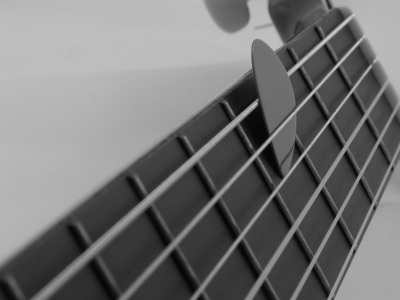In order to become a well-equipped guitar player, the most important technique a guitarist needs to understand and use is modes. It is vital to have a thorough understanding of the theory and practical usage of modes if your aim is to produce killer guitar solos and instrumentals. Understanding the theory of modes also enables you to broaden your expertise on producing songs based on a particular mood. In nutshell you will become a better guitarist/musician if you put in efforts to learn modes.
Before you start to learn modes, make sure that you understand the major scale and have a better understanding of intervals of the major scale. It is also helpful if you know some advanced chords such as 7th, 9th, suspended and diminished etc. The reason for knowing these two basics is that modes are derived from the major scale and chords are used to create rhythms used for soloing in modes.
Difference between Scales and Modes
If you have been playing guitar for over a month and have learnt few songs, it is more than probable that you are familiar with scales. Scales are a combination of notes used primarily for soloing. For some guitar players, scales and modes are the same. This is true up to a certain extent but it is important to understand the difference between scales and modes.
As explained above, a scale is a combination of notes arranged in an order of pitch that starts with a root note and ends at an octave. On the other hand, a mode is also a combination of notes but it creates a wide variety of sounds. A mode is rich in emotions and the combination of notes in a mode is able to create emotionally rich musical pieces. Music is a language and if you speak this language using modes, you can create very good pieces. So the key difference between scales and modes is the rich ability of modes to create wider variety of sounds.
Another thing to understand here is that a mode is a scale within a scale. This statement means that a mode uses exactly the same notes of a major scale but it starts and ends with a note other than the root note. This concept may be hard to understand but I guarantee as we progress through these lessons, you will get a hold of this concept and say ah! How easy it was.
How Modes are Used
It may now have become a little bit clear to you that modes are used to add emotions into your musical pieces, let us now get a deeper understanding of what modes are actually capable of doing. This is best illustrated by an example, if you are playing a piece in C major chord progression and keep playing C major scale over it, this will sound okay unless you start playing a mode based on the C major scale. If you play E Phrygian or F Lydian (these two modes are based on the C major scale) over this progression, you will not feel a significant difference in the resulting sound but if you play C Phrygian or C Lydian over this progression, you will immediately notice a shift in the overall mood created by these modes.
The above illustration lets us understand that playing modes from outside the key does nothing to the overall mood but playing modes of the same key adds flavor to the musical piece being played. It is obvious from this example that all famous guitar players such as Joe Satriani, Steve Vai, John Petrucci and Eric Johnson use modes to add flavor in their musical pieces and create a mood with their music. Every mode holds characteristics of easily identifiable mood or emotion therefore modes enable a guitar player to choose a scale based on the type of music he wants to create. If a guitarist wants to produce a happy sounding musical piece, he will choose Ionian mode whereas if he wants to produce a sad piece he will choose Aeolian or any other minor mode.
All the above examples and concepts will be explained in sufficient detail in further lessons so as to enable you to become a theoretically and technically sound guitar player. All that is required of you is that you put in efforts and start slowly while progressing naturally to the next lesson. I suggest you to understand the underlying concepts first and then move on to the practical usability of the modes. You will learn about how to construct a particular mode, which chords are to be used for rhythms and how to actually use the mode in each of the next lessons.
[asa_collection no_content]modes[/asa_collection]












Nice write up. Thanks.
Thank you 🙂 Do check out other lessons on modes.